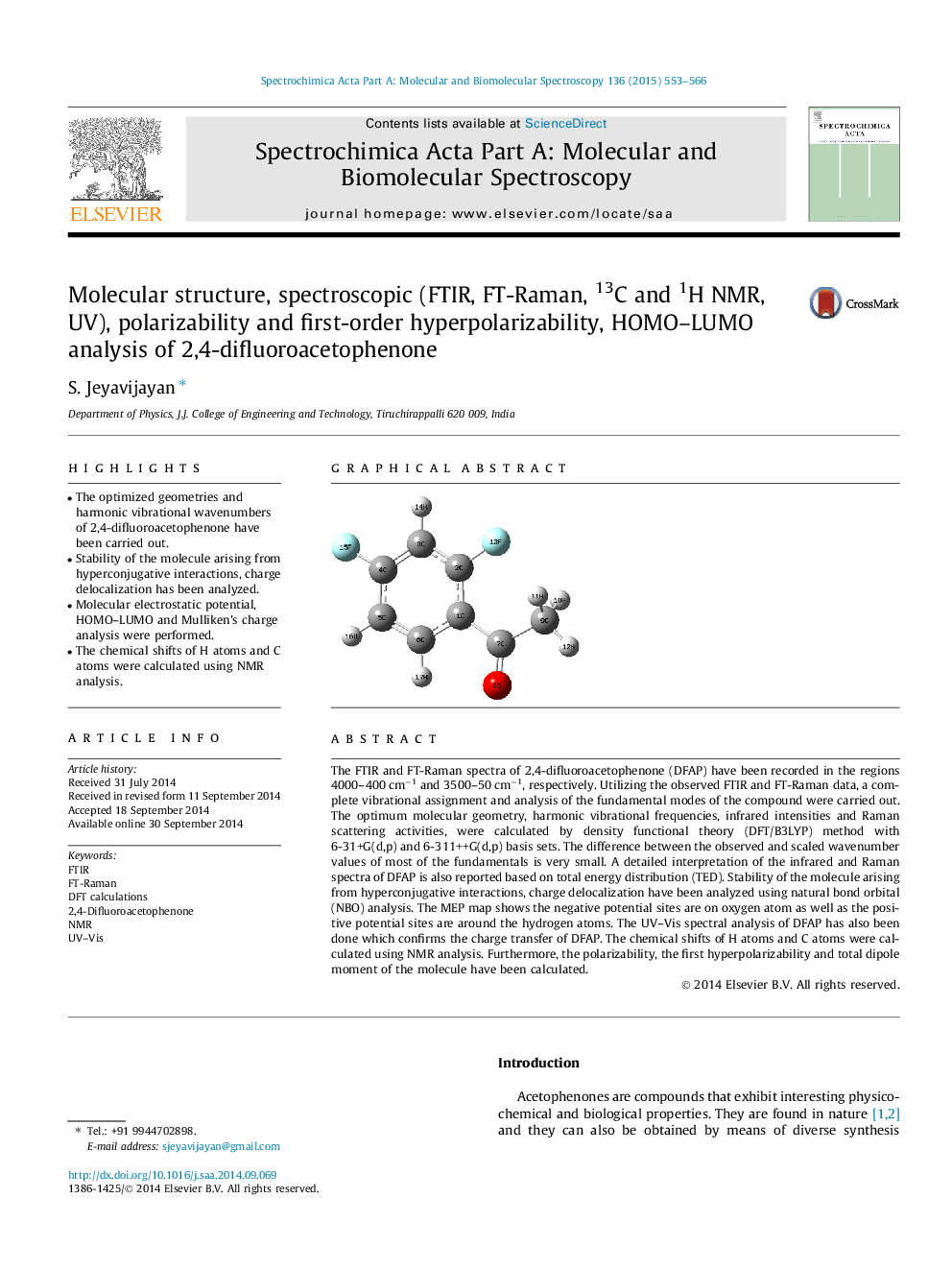| Article ID | Journal | Published Year | Pages | File Type |
|---|---|---|---|---|
| 1229469 | Spectrochimica Acta Part A: Molecular and Biomolecular Spectroscopy | 2015 | 14 Pages |
•The optimized geometries and harmonic vibrational wavenumbers of 2,4-difluoroacetophenone have been carried out.•Stability of the molecule arising from hyperconjugative interactions, charge delocalization has been analyzed.•Molecular electrostatic potential, HOMO–LUMO and Mulliken’s charge analysis were performed.•The chemical shifts of H atoms and C atoms were calculated using NMR analysis.
The FTIR and FT-Raman spectra of 2,4-difluoroacetophenone (DFAP) have been recorded in the regions 4000–400 cm−1 and 3500–50 cm−1, respectively. Utilizing the observed FTIR and FT-Raman data, a complete vibrational assignment and analysis of the fundamental modes of the compound were carried out. The optimum molecular geometry, harmonic vibrational frequencies, infrared intensities and Raman scattering activities, were calculated by density functional theory (DFT/B3LYP) method with 6-31+G(d,p) and 6-311++G(d,p) basis sets. The difference between the observed and scaled wavenumber values of most of the fundamentals is very small. A detailed interpretation of the infrared and Raman spectra of DFAP is also reported based on total energy distribution (TED). Stability of the molecule arising from hyperconjugative interactions, charge delocalization have been analyzed using natural bond orbital (NBO) analysis. The MEP map shows the negative potential sites are on oxygen atom as well as the positive potential sites are around the hydrogen atoms. The UV–Vis spectral analysis of DFAP has also been done which confirms the charge transfer of DFAP. The chemical shifts of H atoms and C atoms were calculated using NMR analysis. Furthermore, the polarizability, the first hyperpolarizability and total dipole moment of the molecule have been calculated.
Graphical abstractFigure optionsDownload full-size imageDownload as PowerPoint slide
